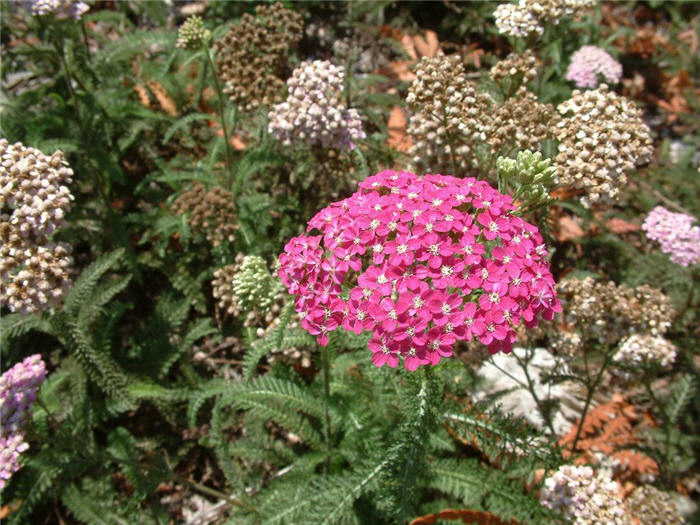| Botanical Name: Achillea millefolium 'Cerise Queen' | |
| Common Name: Cerise Queen Yarrow |

-
Anatomy
-
Culture
-
Design
Plant Type
Ground cover, Perennial
Height Range
1-3'
Flower Color
Red
Flower Season
Spring, Summer
Leaf Color
Dark Green
Bark Color
n/a
Fruit Color
n/a
Fruit Season
n/a
Sun
Full, Half
Water
Low
Growth Rate
Fast
Soil Type
Sandy, Clay, Loam, Rocky, Unparticular
Soil Condition
Average, Rich, Poor, Well-drained, Dry
Soil pH
Neutral, Basic
Adverse Factors
Invasive
Design Styles
English Cottage, Meadow, Mediterranean, Ranch, Seascape, Spanish
Accenting Features
Showy Flowers
Seasonal Interest
Summer
Location Uses
Perennial Border, Foundation, Parking Strip, Walkways
Special Uses
Cut Flowers, Erosion Control, Lawn Alternative, Small Spaces
Attracts Wildlife
Butterflies
Information by: Stephanie Duer
Photographer:
Photographer:
-
Description
-
Notes
Cerise Queen yarrow has deep pink flowers that bloom May to July. Foliage is green, fern-like, and aromatic. Grows about 18 to 30 inches tall, including flowers. Butterflies, bees, and birds love yarrow.
Many different cultivars of Yarrow are available, with different flower colors, including yellows, reds, peaches, and pinks. Yarrow makes a good ground cover when mowed, and tolerates a fair amount of foot traffic. Divide in the spring every few years as the centers can sometimes melt out. Grow in full sun to part shade in well drained soils. Tolerates clay soils. Yarrows are best not planted next to slower-growing and smaller perennials, as they may overtake and overwhelm them.